13Sssssituational analysis
docx
keyboard_arrow_up
School
Kenyatta University *
*We aren’t endorsed by this school
Course
8
Subject
Business
Date
Nov 24, 2024
Type
docx
Pages
24
Uploaded by BarristerBoulderSeaUrchin30
Strategic Decision in The International Marketplace
Name
Course
Date
Contents
Executive summary
......................................................................................................................................
3
Introduction
.................................................................................................................................................
3
Company Overview
.....................................................................................................................................
4
Strategic Focus and plan
..............................................................................................................................
4
Mission
....................................................................................................................................................
4
Vision
.......................................................................................................................................................
4
Situational analysis-strategy
........................................................................................................................
4
PESTEL Analysis
........................................................................................................................................
4
Industrial strategic analysis
......................................................................................................................
7
Porter's Five Forces Model
..........................................................................................................................
8
SWOT ANALYSES
....................................................................................................................................
10
SMART Goals
.............................................................................................................................................
12
Marketing strategy
.....................................................................................................................................
13
Marketing Mix
...........................................................................................................................................
14
Control and implementation
.....................................................................................................................
15
Profit and loss account
..............................................................................................................................
18
Conclusion
.................................................................................................................................................
19
Recommendations
.....................................................................................................................................
19
References
.................................................................................................................................................
21
Executive summary
The purpose of this report is to conduct an analysis of the marketing plan of Focus in regards to
various internal and external factors. The company’s epicentre will be Ireland country serving as
the main market domain. Some of the factors discussed includes political,economic,technology
and legal environment aspects. This particular paper offers a comprehensive view on the
competitive position of the firm and strategies that enables it to fit in the food and beverage
industry. To attain the reports objectives,SWOT analysis, PESTEL and Porters five forces model
was carried out. The situational analysis’s part described the marketing strategies needed to
reach the smart objectives set by the company. In addition, the report will examine control and
implementation aspects and suggest a concrete profit and loss statement account in order to
understand the deliverable outcomes of all the proposed goals and strategies. The paper
concludes by offering recommendations such as how to affirm products quality to achieve
competitive advantage in Ireland
Introduction
This particular marketing plan showcases how the firm will expand its business operations in
terms of its geographical coverage. It will outline the market strategies to attract prospective
customers by establishing its prices to generate more products and enhance successful business
endeavors in a competitive market domain. By carrying out a detailed marketing analysis
utilizing several marketing frameworks. Focus Company can gain valuable insights into its target
market, competitive landscape, and overall marketing strategy. (Adeigbe et al 2015).This will
enable the company to incorporate more effective marketing campaigns, improve customer
satisfaction and loyalty, and ultimately achieve its business goals.
Your preview ends here
Eager to read complete document? Join bartleby learn and gain access to the full version
- Access to all documents
- Unlimited textbook solutions
- 24/7 expert homework help
Company Overview
Focus is a food and beverage company which operates in Ireland. Various entrepreneurs drive the
firm forward as a project to target children interested in food items and drinks. It works across
ten stores and employs at least 50 employees in all departments. There was an initial observation
that the client's choice is quite limited to other firms offering limited services, which is basically
at the lower end of the scale. This prompts startups of the firm to provide premium products.
Focus real strength lies in its partnerships with restaurants and other food joints to deliver the
products. There exists stiff competition in the food industry. Hence, Focus plans to delve into
various stores, using innovative aspects to counteract the existing situation. Opening more units
in Ireland with client satisfaction would be imperative to maintain an advantage in the market.
Strategic Focus and plan
Mission
The mission of Focus company is to offer phenomenal taste at affordable prices in a suitable
atmosphere environment.
Vision
The firm's vision is to create and inspire a healthier society by connecting individuals and kids to
real-world food and beverages. This will enhance the creation of client loyalty and meet their
needs and preferences.
Situational analysis-strategy
PESTEL Analysis
Political
The policy variables typically directly impact the company's activities and profitability margins.
Focus must abide by Ireland's political and legal models. This includes variables like accrued
benefits for workers, information safety, copyrights and patent rights, reduced regulations, firm
protection laws and taxation policies.
Also, antitrust by laws and regulations on the food and beverage firms can affect Focus company
overhead costs of operations. Conversely, if the firm has to minimize the political hazards,
diversification in states with low political instability would be essential (Bennett et al., 2020).
Therefore, the company must evaluate the current political environment of Ireland before
expanding its businesses.
Economic
Economic booms and slumps in Ireland and other UK states can affect the firm's bottom-line
activities. Although Focus Company is expanding in various developed locales, Ireland is still
prone to inflation, increased interest rates, foreign exchange changes and competitive variables.
Other factors revolved around government interventions impacting economic performance and
improvement.
According to Bragg et al. (2018), a low economy will be exposed to exchange rate changes
which are hazardous to the Focus bottom line hence the need to enforce hedging frameworks. In
addition, the state's economic development, education level and adequate skills are factors that
Focus will put into consideration before investing in other markets. In this case, Ireland's
education and skill set in the workforce is tremendously growing.
The social environment
The social environment directly adopts the existing business culture and model of the marketing
aspect. It involves the client's conduct and promoting institutions. Focus company must evaluate
the following elements: client demographics, power structure, community culture, perception,
attitudes, lifestyle and leisure preferences among the society domain. In this case, Ireland has
middle-income earners and a rising population density.
In this case, the school-going children would prefer to consume ready-to-drink soft drinks. Most
people spend some disposable income on buying food and beverages for their children.
Conversely, the decision-making systems in the family, culture, attitudes and health
consciousness should be evaluated. Some of the parents who are decision-makers in the family
ensure that children will not consume beverages since some are believed to have health issues.
These perceptions might lead to decreased sales.
Technology
Advanced innovation factors have evolved the way firms operate across the globe. Focus will be
able to reach a wide range of customers worldwide, attracting a larger customer base and
bringing about minimal production costs.
Focus should analyze the existing technological diffusion and the speed at which it affects
Ireland's food and beverage business (Boukid & Castellari,2021). It will attain this aspect by
understanding the rival's current innovation growth, operation costs, and supply chain nature.
The other elements are product offerings and the value chain. This will boost the efficiency of
distributing the food and beverage products to all stores across Ireland.
Environment&Legal
Before extending to other markets, Focus should evaluate the environmental laws and
regulations required to operate in Ireland and other regions. This includes the support law for
renewable energy consumption, green goods, recycling and pollution. It is imperative to
Your preview ends here
Eager to read complete document? Join bartleby learn and gain access to the full version
- Access to all documents
- Unlimited textbook solutions
- 24/7 expert homework help
understand that not adhering to such a market's environmental rules brings harsh fines. Focus
should conduct businesses that support the ecological footprint and use sustainable raw
materials. Through this, it will get benefits such as incentives and tax breaks from Ireland and
EU.
Industrial strategic analysis
It is imperative to understand that Focus company has implemented a strong global presence in
the food and drinks industry, attracting various competitors. Over the years, these rival firms
have enacted strategies to deal with Focus growing influencing Ireland. Being one of the
industry's players, Focus has accumulated extensive management expertise and a significant
advantage in customer recognition. It has successfully carved out a market niche and utilizes
modern marketing strategies. For example, there is utmost need for Focus to apply effective ERP
system that consolidates market data, enhancing stakeholders like material suppliers, potential
clients and workers to access information from a central platform. By extracting customer
feedback from their website, focus marketing department can design strategies based on reliable
and factual data.
Value shop and drinkut are two notable competitors that have posed a problem to
Focus.Typically,the food and beverage industry is expected to grow in the future due to the
increasing global population, which currently stands at 7.7 billion people. As the population
continues to grow steadily even in Ireland, so will the demand for food. there, customer needs
and demands will evolve alongside modern lifestyles, necessitating continuous adaptation by
market players to cater to the needs of the contemporary buyer.
Porter's Five Forces Model The threat of substitute products:
According to Kanter,Reyes,& Corvalán, (2017),there exist no close substitutes available for a
product, consumers are willing to pay any price. However, in the case of Focus , there are threats
from various homemade food products that are normally sold at lower prices. In addition,
concerns regarding the healthiness of toddler’s beverages have led health-conscious individuals
to seek alternative options.
Supplier's bargaining power: As a brand, Focus holds significant command and can exert its
influence over suppliers in the same industry especially in Ireland (Nguyen, 2017). This enables
focus to purchase products from producers at lower prices, thereby increasing its revenue. For
example, suppliers supply palm oil and has low bargaining power, enabling Focus to control the
price.
Buyer's bargaining power: according to….the existing bargaining power of Focus clients
customers is high because of variables like low switching costs and the availability of substitute
products from brands like Valueshop (Khayat, 2015).By not responding to clients concerns and
overall feedback could lead to a mass exodus, negatively impacting the firm’s profitability ratio.
Barriers to entry: Entry barriers in the market include factors such as product differentiation,
government restrictions, increased capital needs and large economies of scale. Focus faces
drawbacks from entering new markets due to the lack of product differentiation, as their products
can be found in other companies like good food Ireland making it difficult to attract new
customers.
Competitive rivalry: In Ireland and other locales, the food and beverage industry are highly
competitive, which exposes Focus to intense rivalry (Johnson et al., 2013).To extend its
operations, Focus ought to continually innovate its marketing and manufacturing strategies to
meet the demands of modern customers. The loyalty of customers to the Nestle brand is an
advantage in this competitive landscape.
These three models help identify Nestle's market position. Porter's Five Forces Model reveals the
power dynamics in a competitive environment and external factors affecting firm’s development.
In as much as it offers key insights for management, it falls short in offering specific strategies to
overcome competition.Conversley, PESTLE model evaluates macro-environmental factors
affecting the organization but does not directly assess competitive advantage. It assists
management in understanding rules and policies related to the external environment.
Additionally, a SWOT analysis helps identify internal strengths that contribute to the company's
growth. These models collectively highlight the significance of Focus brand recognition and its
competitive position.
To mitigate the bargaining power of buyers, focus must invest to provide products or services
with no close substitutes. Product differentiation plays a crucial role in this regard. Clear and
accurate labeling that reflects product quality can help attract a larger customer base.
Focus boasts a strong and widespread brand image across different regions. This global presence
has contributed to the company's continuous growth and increased revenue over the years.
However, Focus faces fierce competition from other players in the food and beverage industry,
including Valueshop and others. As the global food and beverage industry continues to expand,
new startups introduce innovative approaches to food production, requiring Focus to remain
vigilant and adapt to stay relevant in the market.
Your preview ends here
Eager to read complete document? Join bartleby learn and gain access to the full version
- Access to all documents
- Unlimited textbook solutions
- 24/7 expert homework help
SWOT ANALYSES
Conducting SWOT analyses will be vital in understanding Focus's business model. Based on
such prospects, the firm will capitalize on the benefits to enhance its resilience and improve
performance.
Strengths
Focus company provides premium food through its online and physical stores, which enhances
its competitive advantage.
It targets the specific demography of people in society and, in this case, the kids. This improves
its brand loyalty by use of satisfactory management levels.
Focus possesses solid management in its collar as kind of its former investment banker and
software manager. This has enabled the firm to solve challenges and will prevent future expected
traditional start-up barriers (Carpenter et al., 2020).
It aims at partnering with other firms and enforcing logistic services. Its increased competitive
power and sophisticated partnerships reduce unfair play in the market from rivals.
It also has immense pricing power and offers high-quality food and beverages.
Weakness
As a result of the low drawbacks of entry into the food industry, the rivalry is rising at a
phenomenal speed.
Additionally, due to limited delivery partners and suburban areas and an increased number of
restaurants, Focus cannot extend its operations in those locales.
The firm also faces pricing barriers where clients prefer the cheapest costs. This minimizes brand
loyalty.
Opportunities
There exists a regular change in food habits and trends. There is also optimal awareness among
potential customers concerning healthy lifestyles, alternatives and takeaway choices.
It has fast pace development and robust marketing strategies. It enables the firm to cater to
client's needs, demands and preferences.
It attracts new clients and retains the old ones.
Focus has become one enterprise to deal with food delivery to kids hence maximum growth in
revenue generation. The firm will continue to expand its operations overseas since it can cater to children's needs.
There are developing markets for such products across the UK,US, India and Asia countries.
Therefore, the company will diversify its logistics and supply chain to reach many consumers.
Maximum use of brand portfolio, such as in the health sector, like introducing water and sugar-
free beverages for children's consumption (Bresciani,2017).
Threats
There is increased competition from firms dealing with substitute goods and services. These
threats include;
There is a potential change in client behavior and lifestyle patterns
Existing currency fluctuations
Unfriendly Ireland government policies in the market
Minimally skilled labor in the locale
SMART Goals
SMART
Goals
Specific
To optimize the market share in the Ireland
food and beverage sector by 10% in the next
fiscal year
Measurable
To attain 6% growth rate in revenue in the
initial fiscal year to 7& increase in the next
year
Attainable
Grow and launch mew innovative products to
meet the ever-evolving client’s needs. There
is also need to extend distribution channels in
order to create awareness of the existence of
the product to diverse target group
Relevant
Properly align with increasing clint demand
for sustainable and healthy foods. This will
leverage Focus expertise in the industry
Time-bound
Finalize new product development and launch
within 4 months. Progress to be tracked 4
times per year to make sure that target growth
Your preview ends here
Eager to read complete document? Join bartleby learn and gain access to the full version
- Access to all documents
- Unlimited textbook solutions
- 24/7 expert homework help
rate is being realized.
Marketing strategy
Focus will utilize various strategies in order to attain the smart objectives set
Focus has proactively adapted its marketing strategies to cater to the target audience needs and
preferences.Consequently,Focus management has enhanced the aspect of creating the firm’s own
niche in the social media market and successfully implemented digital marketing strategies. The
firm has established business profiles on various social media channels and utilized influencer
marketing to promote its products and services. With approximately 95 profiles across different
platforms such as Facebook, TikTok, Instagram, and Twitter.Hence,Focus has effectively
engaged with the youth and teenagers, building trust and maintaining a strong online reputation.
This is all aimed at reaching the mart goals
Enacting digital campaigns like caring campaigns
In the coming fiscal year, Focus needs to improve and install campaigns like Ceregrow.It will be
relaunched to target urban couples with children between the ages of 2-5 years. Recognizing the
significance Ireland parents place on their child's health and nutrition, Focus must efficiently
showcase how mothers are concerned about their child's nourishment. The brand indicates how
such campaigns not only satisfies hunger but also provides the necessary nutrients for the child's
immunity, overall development, and nourishment.
Pricing Strategy
In as much as it possesses goods priced higher than retail brands and catering to diverse cultures
and demographics globally, Focus has successfully positioned itself as the world's largest food
production company in Ireland. It aims to continue establishing a price skimming strategy,
initially entering a specific market at a higher price and gradually reducing costs as
manufacturing and distribution cycles are established. By targeting the mass market through
segmentation and differentiation, Focus benefits from an affordable pricing strategy, offering
fair prices for product groups tailored to different cultures, demographics, and geographic
regions.
Brand Building and Equity
In this modern era having competitive business environment, selling a product is not enough.
Enterprise like Focus must establish themselves as brands that provide compelling reasons for
customers to puck them regularly. As stated by Bresciani (2017),It has undertaken various
initiatives to expand brand presence and visibility across different regions. A convenient model is
through franchise stores, which help enhance brand recognition and reach. Clearly, Focus
focuses on ensuring shelf availability of its products by maximizing production cycles, lessening
distribution channels, and raising the level production and distribution units in Ireland.
Marketing Mix
Existing products
New products
Existing markets
Use of effective supply chain
management
efficient advertisement
Acquisition of rival firms
Rival
firms
acquisition
strategies
Research and development
programs
Inclusivity and rapport with
Strategic price decrease
existing
market
control
system sand leaders
New markets
Extending its operations to
other geographical segments
Intensive market research and
growth
Partnerships, franchising and
licensing of companies that
are locally operating
Control and implementation
This will be used to improve the company by acquiring feedback from individuals and
prioritizing reducing the negative concerns raised for better future outcomes.
Revenue Growth
Outcome: The results include the rise in generated revenue rate by Focus
KPI: Year-over-year percentage growth in revenue. Criteria: Main criteria to be used revolves around setting a target growth rate based on Ireland
market environment and historical performance.
Profit Margin
Your preview ends here
Eager to read complete document? Join bartleby learn and gain access to the full version
- Access to all documents
- Unlimited textbook solutions
- 24/7 expert homework help
Outcome: There has been reports on increased profitability ratio by Focus activities from the
sales volume recorded.
KPI: Gross profit margin and net profit margin. Gross profit margin=total revenue-cost of goods sold*100
Total revenue
Criteria: Proper comparison of different profit margins with industry benchmarks and set targets
for improvement.
Market Share
Outcome: Extension of Focus market share in key product categories and geographic regions. KPI: Market share percentage in targeted markets and segments. Criteria: tracking and comparing the existing market share data with rivals like and evaluate the
success of market penetration strategies.
Customer Satisfaction
Outcome: increased client loyalty, satisfaction and retain.
KPI: some of the key performance indicators to address this includes; Customer satisfaction
surveys, Net Promoter Score (NPS), customer retention rate. Criteria: Day to day monitoring of customer surveys to measure satisfaction levels and track
customer retention rates. Set targets for NPS improvement. After acquiring client feedback, there
will be a weekly review to mitigate risks and improve the marketing outcomes. Thus, it will be
taken to overcome negative results. Conversely, the workers' performance levels will be
reviewed after 2 months to establish their key performance indicators. The assessment will also
be based on a reward system to motivate them
Product Innovation and Development
Outcome: Focus company has launched quality new products and innovations. KPI: Number of new product introductions, revenue contribution from new products. Criteria: Tracking the quantity of new products launching the local market, monitor their performance in
the market, and assess their impact on revenue. The firm has already established a website
whereby any client who needs to offer a review; can duly register and do so. Additionally, every
client will receive feedback from the bill section after purchasing food or drinks (Street 2015
Sustainability and Environmental Impact
Outcome: lowering Focus environmental footprint and conformance to sustainability objectives.
KPI: less emissions of gases, energy conversion rates, water usage ratios. These are aimed at
providing data to conserve the ecology
Criteria: Set specific reduction targets aligned with Focus sustainability commitments and
monitor progress regularly.
Profit and loss account
Revenue
2023
Sales revenue
$100,000
(Less sales returns and allowances)
$8,000
Service revenue
$80,000
Interest revenue
$5,000
Other revenue
$1,500
Total Revenues
$178,500
10
Cost of goods sold
$89,500
Gross Profit
$99,000
5
Expenses
Advertising
$400
Accounting and legal fees
Commissions
Payroll taxes
Employee benefits
$500
Vehicle operating costs
Depreciation
Interest expense
$2,000
Maintenance and repairs
$1,000
Office supplies
$1,000
Insurance
$1,000
Rent for premises
Research and development
FOCUS COMPANY
302 Ireland Avenue
TX 75250
focusfmcg@www.com
Your preview ends here
Eager to read complete document? Join bartleby learn and gain access to the full version
- Access to all documents
- Unlimited textbook solutions
- 24/7 expert homework help
Salaries and wages
$40,000
Software
Travel
Utilities
Web hosting and domains
Other
$11,000
Total Expenses
$56,900
3
Net Income
$42,100
2
Conclusion
For Focus's food and beverage company to attain its position as an industry leader, it should
maintain and secure the capital. The resources will be utilized for start-up costs, to implement a
reputable upfront and continue the growth of the business, infrastructure, internal and external
systems, management, new product development and diverse marketing models. Focus company
should be able to accomplish its operations and success in future (Scrinis,2016).
It is evident that Focus company is operating giant industry and can expand its operations by
investing in new and growing markets.
Recommendations
Continuously provide nutrition datasets for the food items by use of social media platforms,
websites and the menu.This will enhance the attraction of visitors and clients with distinctive
tastes and needs.
To minimize production costs, there is also a need to focus primarily on locally sourced raw
materials that are sustainable, available, and cheap.The firm should focus on efficient packaging
systems to offer clients relevant information. This can be done by dealing with aesthetic,
biodegradable, authentic and cheap packaging labels and containers.
There is in need to invest in education and training programs. Through this, the employees will
have adequate skills. This motivates the employees to carry out their duties in a professional
manner. Communication skills should also be improved to intensify the relationships between
customers. This will increase the level of client loyalty, sales and profitability.
References
Adeigbe, R. T., Baldwin, S., Gallion, K., Grier, S., & Ramirez, A. G. (2015). Food and beverage
marketing to Latinos: a systematic literature review. Health Education & Behavior, 42(5), 569-
582.
Barquera, S., Hernández-Barrera, L., Rothenberg, S. J., & Cifuentes, E. (2018). The obesogenic
environment around elementary schools: food and beverage marketing to children in two
Mexican cities. BMC Public Health, 18, 1-9.
Bennett, R., Zorbas, C., Huse, O., Peeters, A., Cameron, A. J., Sacks, G., & Backholer, K.
(2020). Prevalence of healthy and unhealthy food and beverage price promotions and their
potential influence on shopper purchasing behaviour: a systematic review of the
literature. Obesity reviews, 21(1), e12948.
Boelsen-Robinson, T., Backholer, K., & Peeters, A. (2015). Digital marketing of unhealthy foods
to Australian children and adolescents. Health promotion international, 31(3), 523-533.
Boukid, F., & Castellari, M. (2021). Food and beverages containing algae and derived
ingredients launched in the market from 2015 to 2019: a front-of-pack labeling perspective with
a special focus on Spain. Foods, 10(1), 173.
Bragg, M. A., Roberto, C. A., Harris, J. L., Brownell, K. D., & Elbel, B. (2018). Marketing food
and beverages to youth through sports. Journal of Adolescent Health, 62(1), 5-13.
Bresciani, S. (2017). Open, networked and dynamic innovation in the food and beverage
industry. British Food Journal.
Your preview ends here
Eager to read complete document? Join bartleby learn and gain access to the full version
- Access to all documents
- Unlimited textbook solutions
- 24/7 expert homework help
Carpentier, F. R. D., Correa, T., Reyes, M., & Taillie, L. S. (2020). Evaluating the impact of
Chile’s marketing regulation of unhealthy foods and beverages: pre-school and adolescent
children’s changes in exposure to food advertising on television. Public health nutrition, 23(4),
747-755.
Chowdhury, M. T., Sarkar, A., Paul, S. K., & Moktadir, M. A. (2020). A case study on strategies
to deal with the impacts of COVID-19 pandemic in the food and beverage industry. Operations
Management Research, 1-13.
Fleming-Milici, F., & Harris, J. L. (2020). Adolescents’ engagement with unhealthy food and
beverage brands on social media. Appetite, 146, 104501.
Gittelsohn, J., Trude, A. C. B., & Kim, H. (2017). Peer reviewed: pricing strategies to encourage
availability, purchase, and consumption of healthy foods and beverages: a systematic
review. Preventing chronic disease, 14.
Jackson, L. A., & Singh, D. (2015). Environmental rankings and financial performance: An
analysis of firms in the US food and beverage supply chain. Tourism Management
Perspectives, 14, 25-33.
Kanter, R., Reyes, M., & Corvalán, C. (2017). Photographic methods for measuring packaged
food and beverage products in supermarkets. Current developments in nutrition, 1(10), e001016.
Kraak, V. I., Vandevijvere, S., Sacks, G., Brinsden, H., Hawkes, C., Barquera, S., ... & Swinburn,
B. A. (2016). Progress achieved in restricting the marketing of high-fat, sugary and salty food
and beverage products to children. Bulletin of the World Health Organization, 94(7), 540.
Your preview ends here
Eager to read complete document? Join bartleby learn and gain access to the full version
- Access to all documents
- Unlimited textbook solutions
- 24/7 expert homework help
Machado, P. P., Claro, R. M., Canella, D. S., Sarti, F. M., & Levy, R. B. (2017). Price and
convenience: The influence of supermarkets on consumption of ultra-processed foods and
beverages in Brazil. Appetite, 116, 381-388.
Nirino, N., Miglietta, N., & Salvi, A. (2020). The impact of corporate social responsibility on
firms’ financial performance, evidence from the food and beverage industry. British Food
Journal, 122(1), 1-13.
Ogle, A. D., Graham, D. J., Lucas-Thompson, R. G., & Roberto, C. A. (2017). Influence of
cartoon media characters on children's attention to and preference for food and beverage
products. Journal of the Academy of Nutrition and Dietetics, 117(2), 265-270.
Pitts, S. B. J., Ng, S. W., Blitstein, J. L., Gustafson, A., & Niculescu, M. (2018). Online grocery
shopping: promise and pitfalls for healthier food and beverage purchases. Public health
nutrition, 21(18), 3360-3376.
Scott, C., Hawkins, B., & Knai, C. (2017). Food and beverage product reformulation as a
corporate political strategy. Social Science & Medicine, 172, 37-45.
Scrinis, G. (2016). Reformulation, fortification and functionalization: Big Food corporations’
nutritional engineering and marketing strategies. The Journal of Peasant Studies, 43(1), 17-37.
Street, A. (2015). Food as pharma: Marketing nutraceuticals to India’s rural poor. Critical Public
Health, 25(3), 361-372.
Sudari, S., Tarofder, A., Khatibi, A., & Tham, J. (2019). Measuring the critical effect of
marketing mix on customer loyalty through customer satisfaction in food and beverage
products. Management Science Letters, 9(9), 1385-1396.
Your preview ends here
Eager to read complete document? Join bartleby learn and gain access to the full version
- Access to all documents
- Unlimited textbook solutions
- 24/7 expert homework help
Telukdarie, A., Munsamy, M., & Mohlala, P. (2020). Analysis of the Impact of COVID-19 on the
Food and Beverages Manufacturing Sector. Sustainability, 12(22), 9331.
Triguero, A., Fernández, S., & Sáez-Martinez, F. J. (2018). Inbound open innovative strategies
and eco-innovation in the Spanish food and beverage industry. Sustainable Production and
consumption, 15, 49-64.
Truman, E., & Elliott, C. (2019). Identifying food marketing to teenagers: a scoping
review. International Journal of Behavioral Nutrition and Physical Activity, 16(1), 1-10.
Vassallo, A. J., Kelly, B., Zhang, L., Wang, Z., Young, S., & Freeman, B. (2018). Junk food
marketing on Instagram: content analysis. JMIR public health and surveillance, 4(2), e9594.
Wilson, A. L., Buckley, E., Buckley, J. D., & Bogomolova, S. (2016). Nudging healthier food
and beverage choices through salience and priming. Evidence from a systematic review. Food
Quality and Preference, 51, 47-64.
Wood, B., Williams, O., Nagarajan, V., & Sacks, G. (2021). Market strategies used by processed
food manufacturers to increase and consolidate their power: a systematic review and document
analysis. Globalization and health, 17(1), 1-23.
Your preview ends here
Eager to read complete document? Join bartleby learn and gain access to the full version
- Access to all documents
- Unlimited textbook solutions
- 24/7 expert homework help
Related Documents
Recommended textbooks for you

BUSN 11 Introduction to Business Student Edition
Business
ISBN:9781337407137
Author:Kelly
Publisher:Cengage Learning
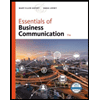
Essentials of Business Communication (MindTap Cou...
Business
ISBN:9781337386494
Author:Mary Ellen Guffey, Dana Loewy
Publisher:Cengage Learning
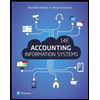
Accounting Information Systems (14th Edition)
Business
ISBN:9780134474021
Author:Marshall B. Romney, Paul J. Steinbart
Publisher:PEARSON
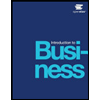
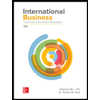
International Business: Competing in the Global M...
Business
ISBN:9781259929441
Author:Charles W. L. Hill Dr, G. Tomas M. Hult
Publisher:McGraw-Hill Education
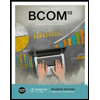
Recommended textbooks for you
 BUSN 11 Introduction to Business Student EditionBusinessISBN:9781337407137Author:KellyPublisher:Cengage Learning
BUSN 11 Introduction to Business Student EditionBusinessISBN:9781337407137Author:KellyPublisher:Cengage Learning Essentials of Business Communication (MindTap Cou...BusinessISBN:9781337386494Author:Mary Ellen Guffey, Dana LoewyPublisher:Cengage Learning
Essentials of Business Communication (MindTap Cou...BusinessISBN:9781337386494Author:Mary Ellen Guffey, Dana LoewyPublisher:Cengage Learning Accounting Information Systems (14th Edition)BusinessISBN:9780134474021Author:Marshall B. Romney, Paul J. SteinbartPublisher:PEARSON
Accounting Information Systems (14th Edition)BusinessISBN:9780134474021Author:Marshall B. Romney, Paul J. SteinbartPublisher:PEARSON
 International Business: Competing in the Global M...BusinessISBN:9781259929441Author:Charles W. L. Hill Dr, G. Tomas M. HultPublisher:McGraw-Hill Education
International Business: Competing in the Global M...BusinessISBN:9781259929441Author:Charles W. L. Hill Dr, G. Tomas M. HultPublisher:McGraw-Hill Education

BUSN 11 Introduction to Business Student Edition
Business
ISBN:9781337407137
Author:Kelly
Publisher:Cengage Learning

Essentials of Business Communication (MindTap Cou...
Business
ISBN:9781337386494
Author:Mary Ellen Guffey, Dana Loewy
Publisher:Cengage Learning

Accounting Information Systems (14th Edition)
Business
ISBN:9780134474021
Author:Marshall B. Romney, Paul J. Steinbart
Publisher:PEARSON


International Business: Competing in the Global M...
Business
ISBN:9781259929441
Author:Charles W. L. Hill Dr, G. Tomas M. Hult
Publisher:McGraw-Hill Education
